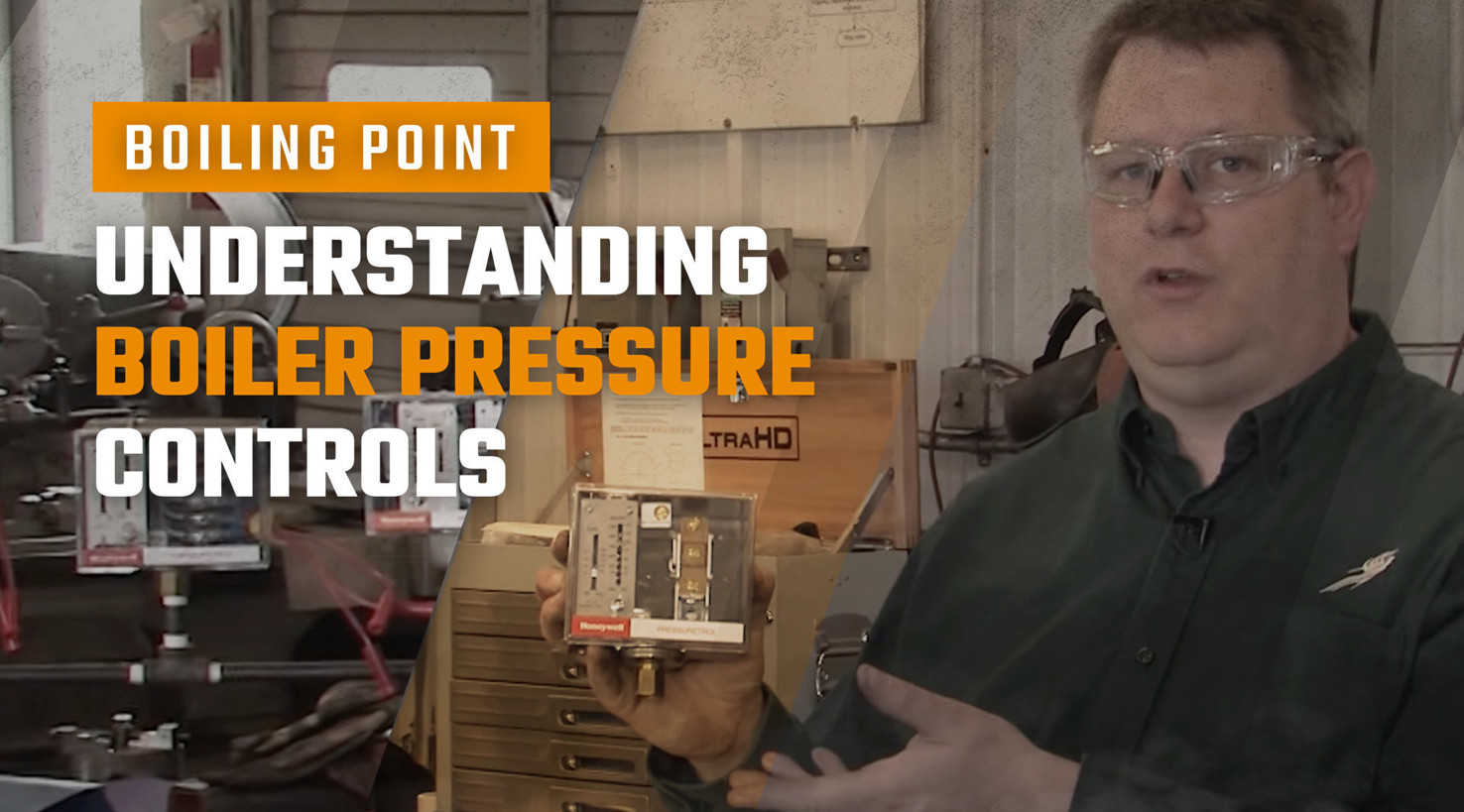In order to maintain proper boiler operation, safety, and efficiency, you have to know what’s going on with the system. Proper operation is all about the flow of information; the boiler control system tells you its operating parameters, and you tell it what to do. One of the most important parameters involved, of course, is system pressure.
Because it’s so important, best practices dictate that a system should have multiple pressure monitoring sensors. This redundancy helps make sure that a simple fault in a gauge or sensor doesn’t lead to catastrophic consequences. In fact, because a boiler system is producing and moving so much energy, it’s a good idea, and a safe one, to build redundant monitoring into every part of your boiler system.
Main Control
The boiler operating control is the first place you’ll find pressure monitoring capabilities. Most boiler operating controls, like the Honeywell models that WARE recommends, include overpressure safety. If the boiler exceeds its set pressure level, the limit circuit is tripped, which in turn shuts off the fuel supply to the boiler to stop the production of steam.
In fact, despite what many people think, the operating control’s main function is to shut down the system if pressure gets too high. The pressure setting is usually calibrated to shut the system down if it goes above the highest limit of normal system operation, with a slight margin built in for pressure surges. For example, if your system is designed to operate at 120 psi, the operating control would typically be set to shut the system down at a pressure of 140 psi.
High Limit
As a backup to the operating control, the high limit control provides redundant protection against excessive system pressure. However, the high limit control offers an additional level of protection that the operating control does not: A manual reset switch. While the operating control will automatically reengage its cutoff switch when system pressure drops, the high limit control will not. That adds an additional level of safety to ensure that a boiler doesn’t keep shutting off, then going into an overpressure state, then shutting off again in a continuous loop. The high limit control won’t enable system operation at all until it has been manually reset, ideally after the problem has been identified and corrected.
Mercury Switches
Inside many boiler controls, you’ll see a mercury switch. While some may think this is outdated technology, it’s actually an excellent type of switch for this task. First of all, it’s extremely reliable; since it works using simple physics, it’s going to work every time. Second of all, a mercury switch provides visual confirmation that the switch has been tripped, because you can literally see if it’s in the “off” or “on” position.
However, mercury is a hazardous substance. In the name of safety, newer boiler controls typically use microswitches to maintain safe operating pressures. While they are extremely reliable, they do not provide visual feedback that the switch has been tripped.
Fire Down Below
Another control that is integral to system operating pressure is the firing rate controller. It’s responsible for maintaining proper system pressure under load, which it does by increasing and decreasing the firing rate to generate more or less steam as needed. The firing rate controller typically operates with a slide-wire potentiometer powered by a 3-wire, or Series 90, connection. As a pressure diaphragm moves the potentiometer up and down, the controller sends corresponding signals to the firing rate modulating motor to adjust the firing rate accordingly.
A properly calibrated firing rate controller will have high fire setting set at the lowest pressure desired on the system. That way, the boiler will be at high fire when system demand is the greatest. Low fire should be set to ensure that the burner is at minimum input when demand is reduced. To ensure proper operation and safety, it’s important to have the firing rate controller properly synchronized with the boiler operating control and high-limit control. A certified technician from WARE can help make sure everything is coordinated, calibrated, and working together properly.
Low Fire Hold
Many boiler systems also include a fourth controller that affects system pressure. Known as the low fire hold controller, it is designed to make sure that the boiler is at a minimum temperature and pressure before going to full power. Just like revving a cold car engine will put undue stress on the parts inside, setting a cold or recently-started boiler to high-fire before it’s ready will cause stress in the form of thermal shock. Over time, thermal shock can cause tube and refractory damage that will result in lost efficiency and unsafe system operation.
How It All Works
TogetherHere’s how the various controllers integrate together during operation:
- The operating controller’s highest limit should be set at the highest preferred operating pressure of the boiler system.
- The high limit controller should be set at a point slightly higher, to allow a buffer for pressure surges.
- The low fire hold controller is set to the specified point at which the boiler is properly warmed up and ready to take on additional load; this is a parameter determined by your boiler’s manufacturer.
- The firing rate controller is the best way to adjust boiler output, since it can directly affect firing while using the operating control and high limit control as safety backups.
- When adjustments are made with the firing rate controller, the operating control must also be adjusted so that the boiler doesn’t shutdown prematurely, or short-cycle.
- A low fire hold controller is only a safeguard to prevent damage; it is not a substitute for proper, attentive, manual boiler warming.
If you need a new controller, a new boiler, or service on your existing system, WARE has the expertise to do it right. Please contact us today.
